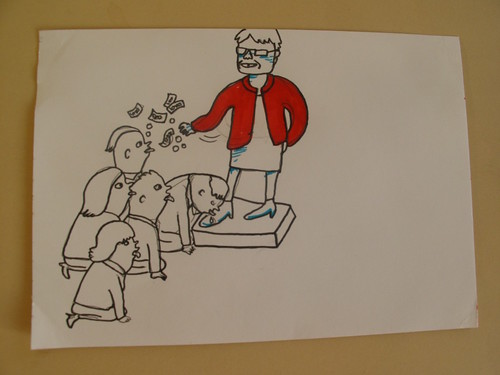Solar Panels – Basics |
| Posted: 26 Dec 2010 02:04 PM PST
The use of solar energy is growing and developing at a surprisingly fast pace – so soon will be one of the largest industries in the world. Because of this rapid expansion of solar energy options available today, plus an equally rapid decline in component prices, it is important that you do your research and understand all the potential pitfalls before making a financial commitment to proceed. Research what kind of solar system that best suits your scenario. Factors such asif you live in a city or country you are in a conservation area orientation / angle, and the area available to your site, such as energy consumption, instead of electricity or hot water or both, to create, Connect the AC power or stand-alone power options, any restrictions on the installation of all devices on your site. Installation costs. What you can afford, you can do any work itself, there is a government or grants from the Council it wouldthis money be better spent improving the insulation of homes, calculate the potential savings in energy costs. Finally, there are many different types of "green" energy sources on the market today – wind power, bioenergy, hydro, geothermal and gas. Compare your best option would see solar as the pros and cons of each stack up. Let's look at some basic facts about the resource energy from direct sunlight. On a cloudless afternoonOne could equate to 1000 m². This must be corrected for the angle between the surface and the sun. An important correction to the width of the earth away from the equator. For example, in north London at 51 degrees is about 60% discount on the equator. It would further the period of the year and even more reduced cloud cover. On average, the sun shines about 34% of daylight hours in London. The combined effect of these three factors isthat the average power before the sun per square foot of south facing roof of London about 110 W / m². Now let's see some rough estimates of the potential power that might attempt to use the sun. The two most common options for local solar energy are "solar thermal" (so the hot water) and "solar photovoltaic" (which is ongoing). Solar thermal uses the simplest technique for heating the water directly. Suppose we have 10m ² of solar thermal collectors and the south are50% more efficient in converting solar energy 110 W / m² in hot water. 50% x 10 x 110 W m / m, which would provide 13kWh per day Photovoltaic (PV) panels convert sunlight into electricity. Typical solar cells have an efficiency of about 10%, was the most expensive over 20% more efficient. An average of 20% of South solar panel would be effective in England 20% x 110W x 10m ² / m² = 22W m /, which would have made 5 kWh per day Installing solar panelsis about four times more expensive than solar thermal collectors and provide less than half the energy. The question then is whether the warm water (low energy level) is practical for your situation than the current (high energy). Some manufacturers now produce "combined", which provide both hot water and electricity, but its premium price. My advice to anyone thinking of solar energy would be to estimate the savings claimed by the producers a lot of studythoroughly with reliable organizations and material, it varies greatly depending live anywhere in the world you. There is a wealth of information out there, but do your research thoroughly and find valuable information from others who have already installed solar systems in your region. |
| You are subscribed to email updates from 1000w Generator To stop receiving these emails, you may unsubscribe now. | Email delivery powered by Google |
| Google Inc., 20 West Kinzie, Chicago IL USA 60610 | |

